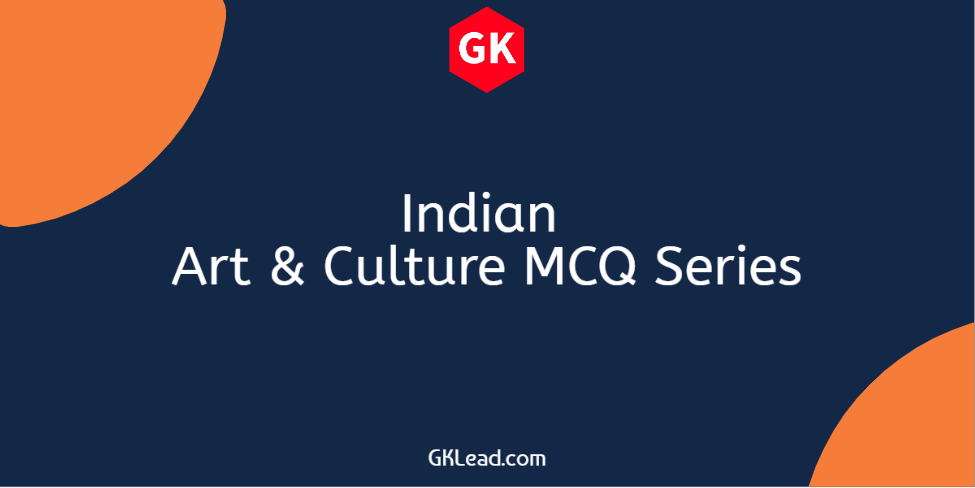Indian Art & Culture MCQ Set-20
Ancient Indian Philosophy MCQ for competitive examinations in India such as UPSC, SSC CGL, SSC CHSL, NDA, State PSC, Police recruitment and various government job recruitment examination by the Government of India, PSUs and the state Governments in India.
Q.1 Which of the following Shastra is called as the Hindu System of Architecture of Science of Architecture?
A. Artha Shastra
B. Vastu Shastra
C. Samudrika Shastra
D. Dharma Shastra
Answer: B. Vastu Shastra
Note: Vastu shastra is a traditional Indian system of architecture originating in India. Texts from the Indian subcontinent describe principles of design, layout, measurements, ground preparation, space arrangement, and spatial geometry.
Q.2 Samudrika Shastra deals with:
A. Knowledge of body features
B. Knowledge of sea & river
C. Knowledge of human consciousness
D. None of these
Answer: A. Knowledge of body features
Note: Samudrika Shastra, part of the Vedic tradition, is the study of face reading, aura reading, and whole body analysis. Samudrika Shastra is a Sanskrit term that translates roughly as “knowledge of body features.”
Q.3 Which of the following Shastra deals with military strategy?
A. Dharma Shastra
B. Artha Shastra
C. Samudrika Shastra
D. Samkhya Sutra
Answer: B. Artha Shastra
Note: The Arthaśāstra is an ancient Indian Sanskrit treatise on statecraft, economic policy and military strategy. Kautilya, also identified as Vishnugupta and Chanakya, is traditionally credited as the author of the text.
Q.4 Where is the world’s largest panoramic sculptural relief located?
A. Ajanta
B. Ellora
C. Mahabalipuram
D. Jaipur
Answer: C. Mahabalipuram
Q.5 Natya Shastra, the source of Indian classical dance was written by:
A. Bharata Muni
B. Kautilya
C. Kashyapa
D. Narada Muni
Answer: A. Bharata Muni
Note: The Nāṭya Śāstra is a Sanskrit treatise on the performing arts. The text is attributed to sage Bharata Muni, and its first complete compilation is dated to between 200 BCE and 200 CE, but estimates vary between 500 BCE and 500 CE.
Q.6 Which of the following Shastra deals with arts & crafts?
A. Vastu Shastra
B. Shilpa Shastra
C. Artha Shastra
D. None of these
Answer: B. Shilpa Shastra
Note: Shilpa Shastra literally means the Science of Shilpa (arts and crafts). It is an ancient umbrella term for numerous Hindu texts that describe arts, crafts, and their design rules, principles and standards. In the context of Hindu temple architecture and sculpture.
Q.7 Yoga Shastra of Hemchandracharya is a Shastra of which of the following religion?A
A. Hinduism
B. Buddhism
C. Jainism
D. None of these
Answer: C. Jainism
Note: Yogashastra is a 12th-century Sanskrit text by Hemachandra on Svetambara Jainism. It is a treatise on the “rules of conduct for laymen and ascetics”, wherein “yoga” means “ratna-traya”, i.e. right belief, right knowledge and right conduct for a Svetambara Jain.
Q.8 Rasa Lila was romanticized in which of the following book?
A. Gita Govinda
B. Bhagavad Gita
C. Bhagavad Purana
D. Mahabharata
Answer: A. Gita Govinda
Note: Gita Govinda was written by 12th century Bhakti Movement poet & saint Jayadeva.
Q.9 Which of the following Indian philosophy is the strongest proponent of non-violence and violence against animals?
A. Jail Philosophy
B. Nyaya Philosophy
C. Vedanta Philosophy
D. Buddhist Philosophy
Answer: A. Jail Philosophy
Q.10 Which of the following is the oldest Indian Philosophy that separates body (matter) with soul (consciousness) completely?
A. Jail Philosophy
B. Nyaya Philosophy
C. Vedanta Philosophy
D. Buddhist Philosophy
Answer: A. Jail Philosophy
List of Indian Art & Culture MCQ sets from GKLead.com
- Indian Art & Culture MCQ Set-1
- Maurya Empire Culture MCQ Set-2
- Gupta Empire Culture MCQ Set-3
- Gupta Empire Culture MCQ Set-4
- Gupta Empire Art MCQ Set-5
- Ancient Indian Art MCQ Set-6
- Ancient Indian Art MCQ Set-7
- Medieval India Culture MCQ Set-8
- Indian Art & Culture MCQ Set-9
- Indian Classical Music MCQ Set-10
- North East India Festival MCQ
- South Indian Festival MCQ-12
- Chola Empire Art MCQ Set-13
- Mughal Empire Art MCQ Set-14
- Bhakti Movement MCQ Set-15
- Bhakti Movement MCQ GK Set-16
- Bhakti Movement MCQ Set-17
- Modern Indian Art MCQ Set-18
- Indian Art & Culture MCQ Set-19
- Ancient Indian Philosophy MCQ Set-20

